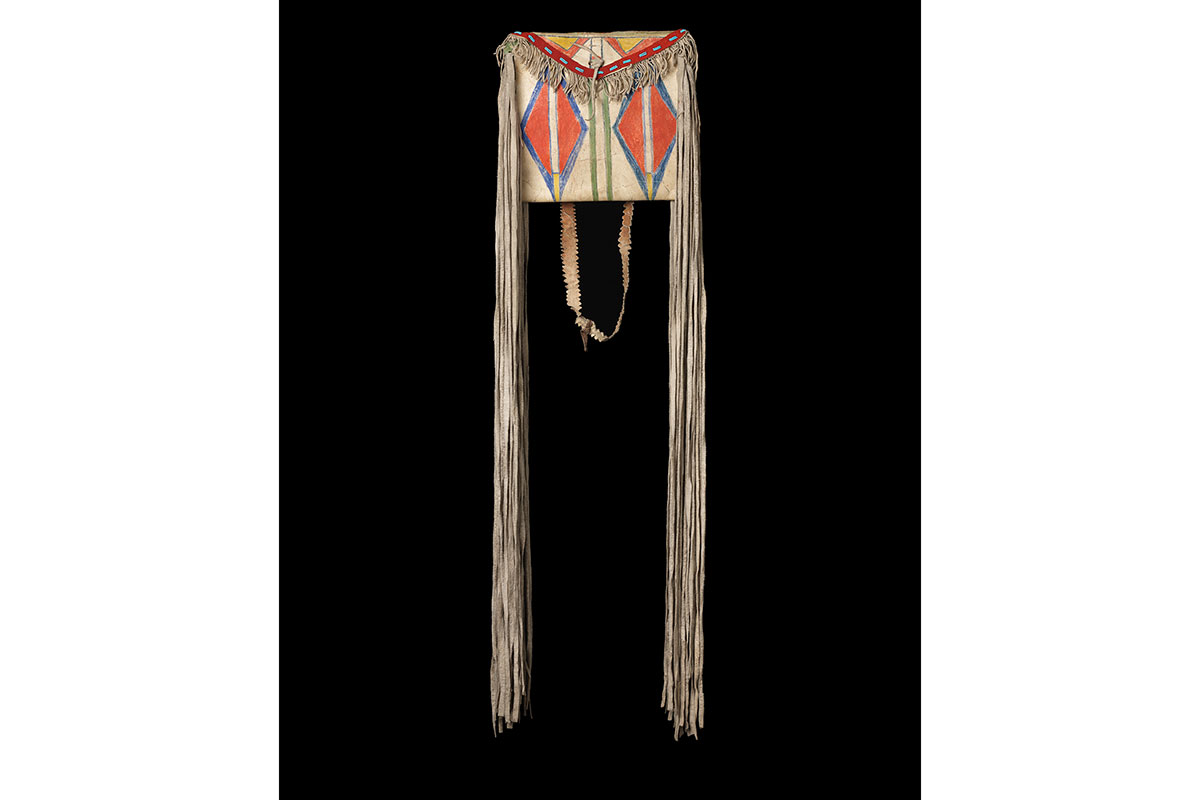Side Fringe Parfleche
Northern Plains
ca. 1890
hide, paint
height: 11 ¾"
width: 10 ¼"
Inventory # P4098
Sold
overall length with fringe: 52
Provenance
Ex Glenbow Museum Collection, Calgary, Alberta
RELATED EXAMPLE
Torrence, Gaylord. The American Indian Parfleche: A Tradition of Abstract Painting. Seattle: University of Washington Press, 1994, page 204
The word ‘parfleche’ has its origins in the French fur trade of the sixteenth and seventeenth centuries. Literally translated as ‘to turn away arrows,’ the term likely refers to the toughness of rawhide and its concurrent use in the manufacture of war shields. The majority of parfleche were made on the Plains between 1750 and 1880. Although the abstracted design elements have their roots in older forms of artistic expression, parfleche were a relatively new invention corresponding to the introduction of horses to the Plains. The transformation from semi-horticultural to a nomadic way of life necessitated containers to carry possessions including dried foods, tools and ceremonial regalia.
This elegant parfleche is the work of a Apsáalooke woman from the Northern Plains in what is now Montana and Wyoming. Framed by the addition of two long side fringe, the mirror-like image is striking in its perfect compositional balance as well as the boldness of colouring. The overall effect is one of enticing visual integrity. Such geometric compositions, as well as the manufacture and embellishment of parfleche envelopes themselves, were an artistic privilege of Plains women. Before forming the containers themselves, hides had to be cut and stretched before rich and colorful painting could be applied. The bold designs reveal affinities with earlier painting on hide that originated in the Northeast and Great Lakes regions before the westward migration of several of these nations to the Plains.

